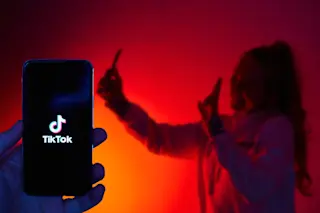Wouldn't it be nice if someday you could roll up your computer monitor, stuff it in your back pocket, and then unroll it so you could browse an online newspaper in a café or read e-mail off your palm-top computer? Heiko Jacobs, an electrical engineer now at the University of Minnesota, has been experimenting with flexible assemblies of LEDs that could possibly do just that. The invention grew out of his work in the laboratory of Harvard University chemist George Whitesides, a pioneer in using chemical interactions to self-assemble small structures. Recognizing that such interactions could eliminate many tedious steps in manufacturing common electronics, a team led by Jacobs developed a bendable LED screen that builds itself. The researchers fabricated a pattern of copper wires onto a half- inch- wide flexible plastic sheet, which they dipped in solder that sticks only to metal and then dunked into a water-filled vial. ...
Computer Screens Get Ready to Roll
Explore flexible LED screen technology that allows for bendable displays, revolutionizing how we interact with electronics.
More on Discover
Stay Curious
SubscribeTo The Magazine
Save up to 40% off the cover price when you subscribe to Discover magazine.
Subscribe













